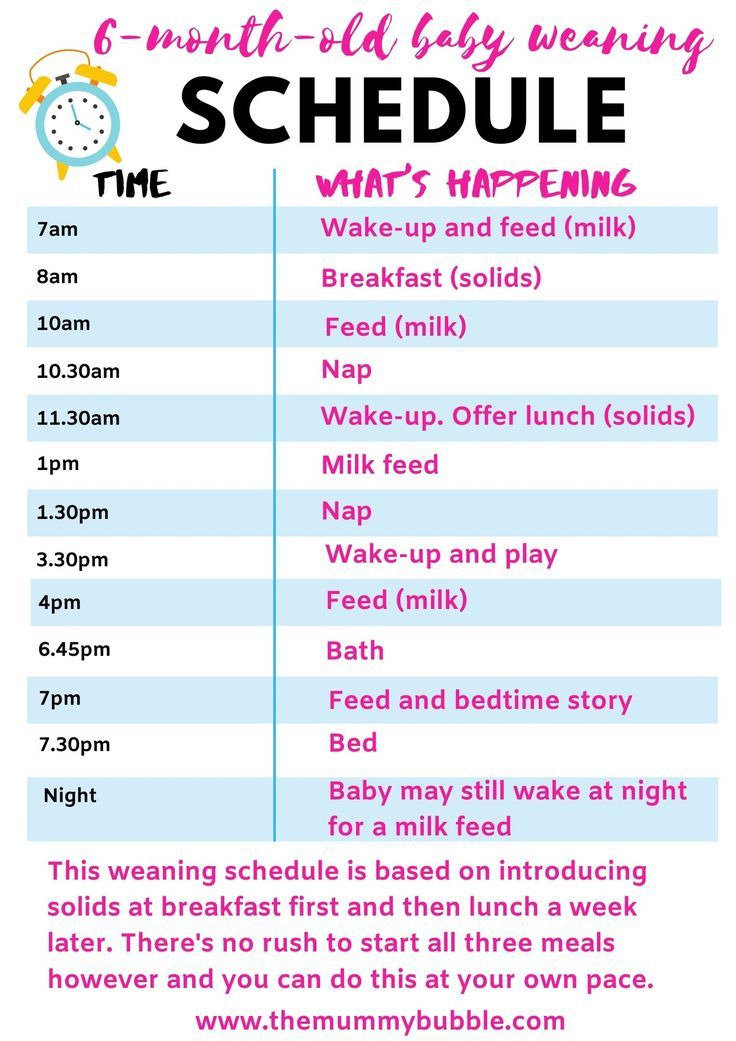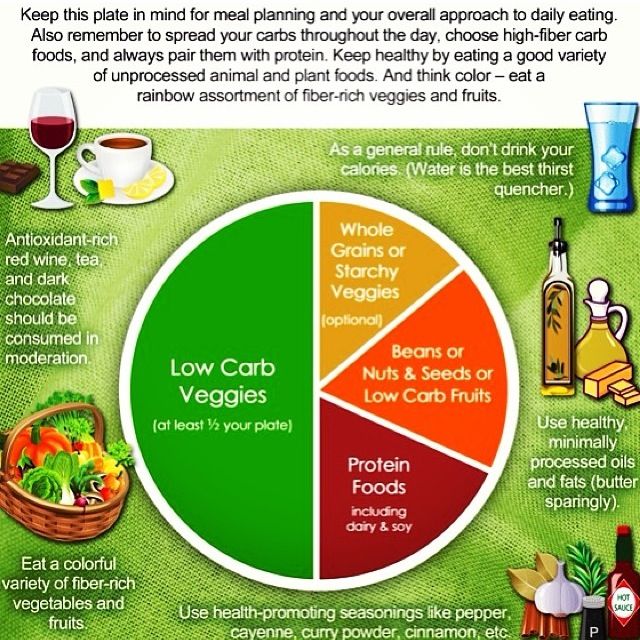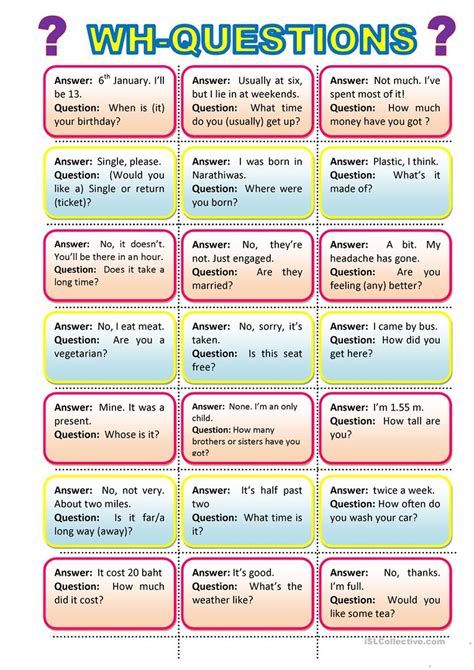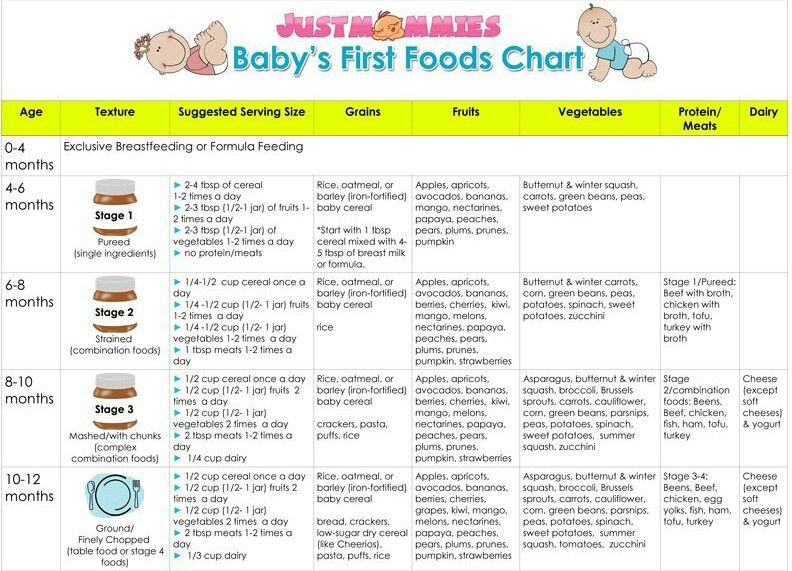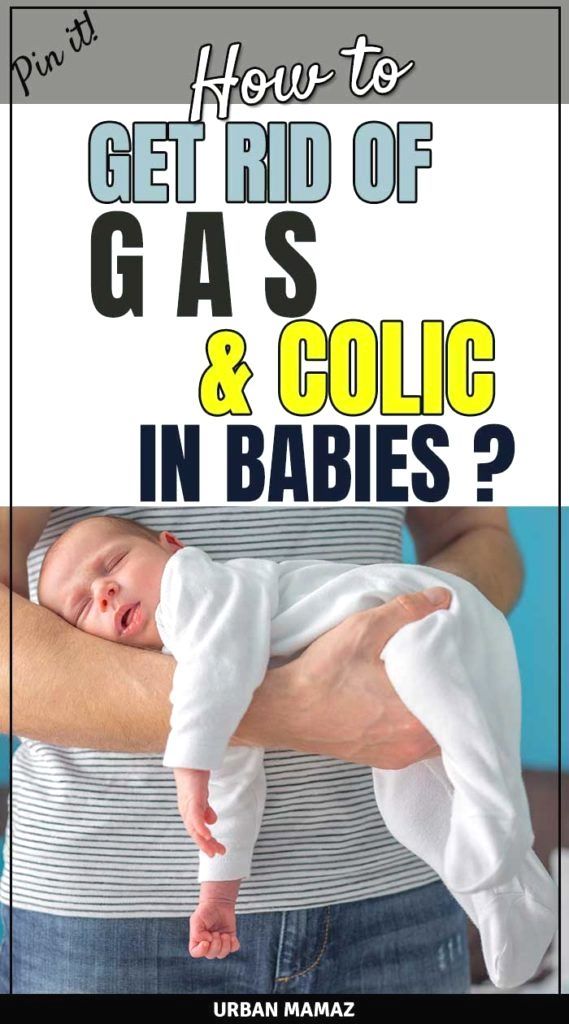Shrimp for baby food
How to Cook Shrimp for Babies
Jump to Recipe
Serving shrimp to babies can be tricky. Follow these cooking tips, serving suggestions, and healthy recipes.
Jump to:- When to introduce
- Is shrimp safe for babies?
- Health Benefits
- Shrimp Buying Guide
- How to Cook Shrimp for Babies
- How to Serve for Baby Led Weaning
- Frequently Asked Questions
- Additional Resource
- How to Cook Shrimp For Babies
When to introduce
Shrimp can be offered to babies as soon as they’re ready to start solids, usually around 6 months. It’s important to remember that your baby is unique and that rather than going by the calendar, you need to make sure your baby is DEVELOPMENTALLY ready to start solids.
If you’re unsure, be sure to grab my FREE handout!
Is shrimp safe for babies?
Its chewy and rubbery texture makes it hard for babies to handle and can lead to choking. But that doesn't mean that you should avoid it all together, especially if your family enjoys shrimp or any other shellfish for that matter.
But be sure to cook the shrimp properly and serve in an age-appropriate way, which I am about to show you.
Also, shrimp and other shellfish are one of the top allergens, and if you were told to wait until around 2-3 years of age to introduce them, this is outdated advice!
The current recommendation is to introduce highly allergenic foods EARLY and OFTEN. By doing so, you can dramatically reduce the risk or actually help prevent the development of food allergies.
When first introducing, start with a small amount. Be sure it's the only new food on your baby's plate so that if there is an allergic reaction, you will know what caused it.
Serve it at home early in the day so you can monitor your baby for any reaction(s) and get medical help if necessary.
Note: If your baby is allergic to shellfish, it doesn’t necessarily mean they will be allergic to finned fish, as well. Same goes for different types of shellfish. Therefore, be sure to introduce all new fish and shellfish one at a time, just like you would tree nuts.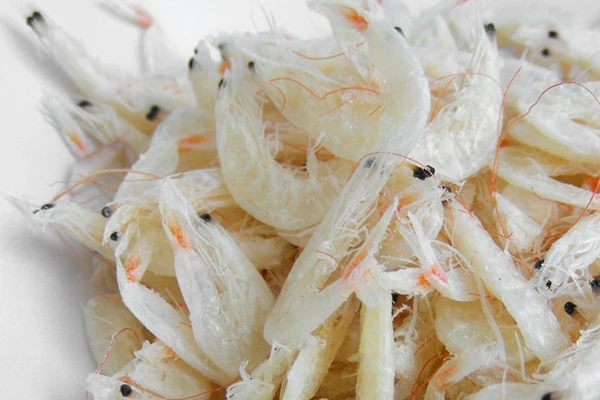
Health Benefits
Shrimp is a great source of protein as well as nutrients that support brain development, including omega-3 fatty acids, B12, and choline. It is also lower in mercury compared to other fish and shellfish.
However, enjoy in moderation as it is high in sodium. And shrimp are oftentimes treated with chemicals and antibiotics.
Here's a list of best shrimp to purchase along with other seafood.
Shrimp Buying Guide
I don’t know about you, but with so many choices, buying shrimp can be quite confusing! So I hope this is helpful.
Wild-caught vs. Farmed Shrimp
Let's talk about safety first. Farmed shrimp are grown in aquaculture ponds that require antibiotics and chemicals to control bacterial growth. They're also injected with antibiotics and hormones.
Wild-caught shrimp are free from any of these.
However, the method by which shrimp are caught poses a threat to the wild fish populations and the overall ecosystem.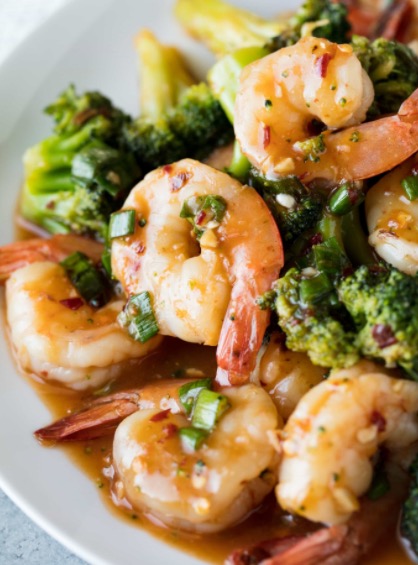
Something I learned during my research is that wild-caught US shrimp are the most highly regulated and harvested in a way that does not disturb their natural environment. They are also caught without using slave or forced labor, which is the case for many of the countries supplying shrimp.
All this to say, both types of shrimp have their benefits and flaws. The main takeaway is to enjoy shrimp with your family, including your baby.
But do strive for variety by enjoying other sustainable seafood that are available in your region. If possible, buying directly from local fishermen is always the best idea.
Fresh vs. Frozen
I personally purchase frozen. Here’s why. Most local grocery stores sell defrosted shrimp. While it may seem convenient, shrimp are highly perishable and once thawed, the quality and texture start to decline.
And there’s no way of knowing how they were thawed or for how long. After sitting for a couple of days, they become mushy and oftentimes that’s when they go on sale.
Frozen shrimp are sold either in block form or individually quick frozen (IQF). I buy the latter. I’ve learned that they are frozen shortly after being harvested and this process best preserves moisture, texture, and flavor.
It also allows me to thaw just what I need rather than having to thaw the entire package. Just make sure “shrimp” is the only ingredient listed.
What's the best size?
A shrimp’s size is measured by the number of individual shrimp it takes to make up a pound. The smaller the number, the bigger the shrimp.
So 16/20, which is what I usually get, means there are 16-20 shrimp in a pound. Ignore labels like medium and jumbo as they’re not standardized and can vary greatly depending on the seller.
Head on or off?
Purchase headless, unless you can get your hands on live shrimp. The head contains enzymes that break down shrimp flesh once they die, resulting in a mushier texture.
Shelled?
Shells help seal in flavor and keep the shrimp moist.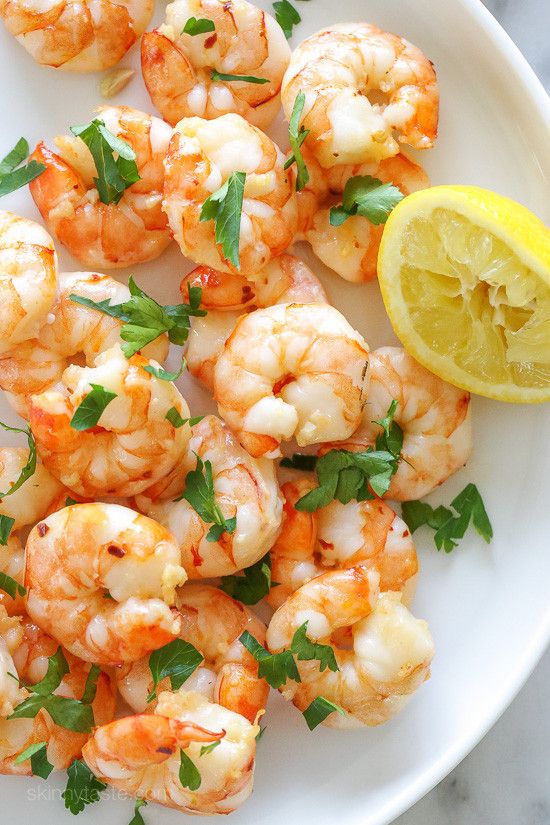 However, it’s a bit inconvenient to handle, isn’t it? If you’re adding to dishes, like pasta, rice, etc., I say purchase easy-to-peel or shelled. But if you’re grilling and serving on its own, shell-on is the better option.
However, it’s a bit inconvenient to handle, isn’t it? If you’re adding to dishes, like pasta, rice, etc., I say purchase easy-to-peel or shelled. But if you’re grilling and serving on its own, shell-on is the better option.
How to Cook Shrimp for Babies
Here are the top four methods
Steamed
This is my favorite way to cook shrimp for babies.
Insert a steamer basket into a large pot. Fill with water to just below the steamer basket. Bring water to a boil.
Add shrimp to the pot and cover with a lid. Reduce heat to low and steam for 4-5 minutes.
Sauteed
Heat skillet over medium-high heat. Add olive oil or butter and once it begins to shimmer add the shrimp.
Once they start to turn pinkish on the bottom and curl, about 2-3 minutes, flip them over. Finish cooking until pink, opaque, and curled into a loose “C” shape, about 1-2 minutes. Immediately transfer to a plate to prevent overcooking.
Broiled
Turn the broiler on.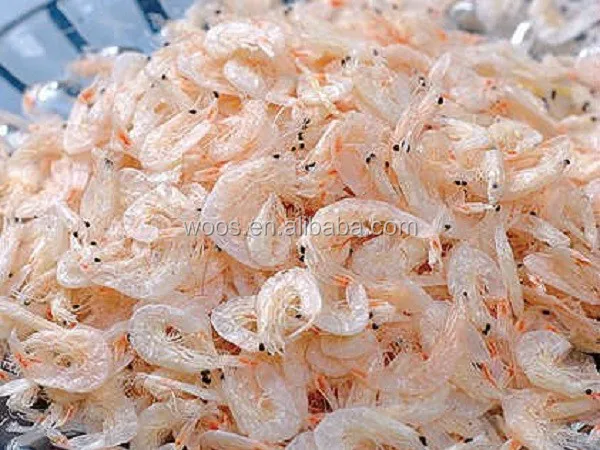 Line a baking sheet with parchment paper or a baking mat and place shrimp on top in a single layer, making sure there's space in between so they don't touch.
Line a baking sheet with parchment paper or a baking mat and place shrimp on top in a single layer, making sure there's space in between so they don't touch.
Place on the top oven rack and broil for 2-3 minutes.
Baked
I personally love making shrimp cakes as they make for a wonderful finger food for babies and freeze beautifully!
Here's a recipe you can try that is well-loved by many families around the world!
Boiled
While this is a common way to cook shrimp, I personally don't recommend it as it's so easy to overcook the shrimp. Not to mention, you can lose some of the shrimp flavor in the boiling water.
How to Serve for Baby Led Weaning
Once you've cooked the shrimp using any of the methods mentioned (except the cakes), be sure to finely mince and fold into foods.
By 8-9 months of age, your baby will be able to pick up small pieces. However, its tough texture makes it hard to chew so continue to finely chop or shred.
Here are some suggestions:
- Combine with mashed avocado and serve with a spoon or spread onto toast
- Combine with mashed beans (pictured: white beans) with herbs/spices (pictured: cumin and cilantro)
- Shrimp Cakes
- Add to oatmeal with vegetables (can shape into balls or fingers)
You can also add to family meals like this seafood paella (recipe from my One Pot Meals cookbook).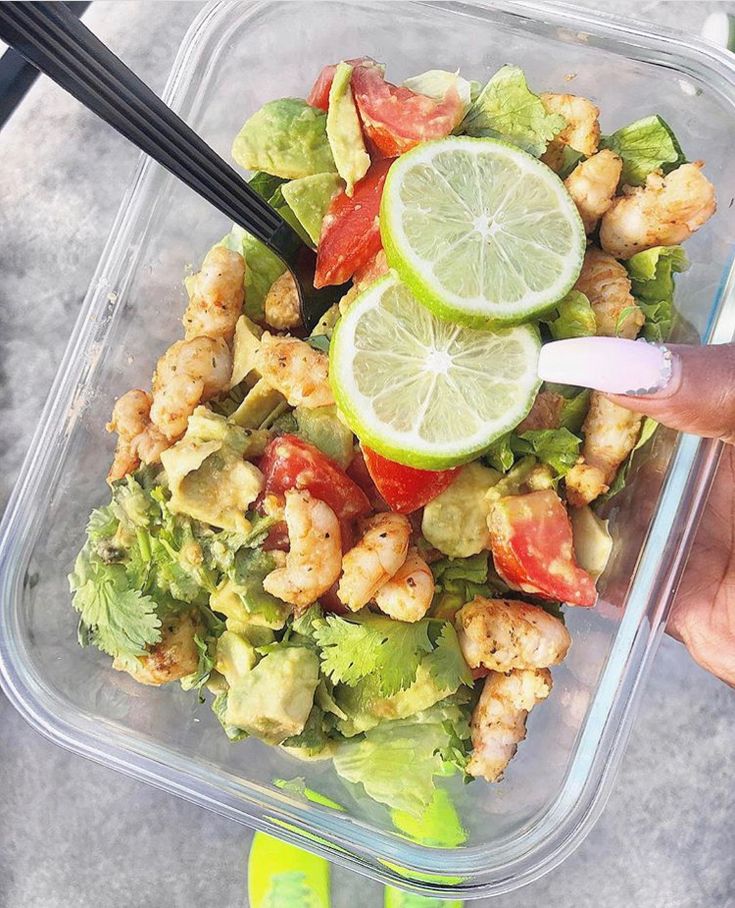
Frequently Asked Questions
What's the best way to thaw shrimp?
If you’re planning ahead, thaw in the fridge overnight. But if you need a quick fix, take out of the bag and place in a bowl under COLD running water. They’ll be ready in just a few minutes! Warm water will alter their texture.
If you don’t want to let the water run, simply place in a bowl of cold water. It will take about twice as long using this method. Be sure to dry them on a paper towel before cooking
How do I know when shrimp is done cooking?
Here’s a general rule:
“U” shape means it’s underocoked
“O” shape means it’s overcooked
“C” shape means bingo! Perfectly cooked shrimp
How can I properly store cooked shrimp?
Transfer to an airtight container and keep in the fridge for up to 3 to 4 days.
Additional Resource
Are you:
- getting ready to start or at the beginning stage of introducing solid solids and feeling overwhelmed?
- stuck on purees and having a really difficult time transitioning to table food?
- or tired of serving the same foods on repeat and want to offer more variety of foods to your older baby or toddler?
Here's my 3 MONTH Baby Led Feeding Journey Program!
It's a complete roadmap that would show you through daily videos and photos of what foods and how to serve them to your baby AND the rest of the family at the same time. Everything you need to know all in one place!
Everything you need to know all in one place!
Do you want to minimize picky eating and set a solid foundation for a lifetime of healthy eating habits?
Check out this 3 month mastering self-feeding program! It’s the closest thing to me being in your kitchen
Find out more!
If you want to learn how to prepare other specific food(s), check out my How To Series!
How to Cook Shrimp For Babies
Serving shrimp to babies can be tricky. Follow these cooking tips, serving suggestions, and healthy recipes.
5 from 4 votes
Print PinPrep Time: 5 minutes
Cook Time: 5 minutes
Total Time: 10 minutes
Servings: 6
Author: Min | MJ and Hungryman
- ▢
Steamer
- ▢ 1 pound (16 oz.) medium to large shrimp, fresh or thawed, if frozen
- ▢ 2 tablespoons oil or butter (if sauteeing or broiling)
Steamed
Insert a steamer basket into a large pot.
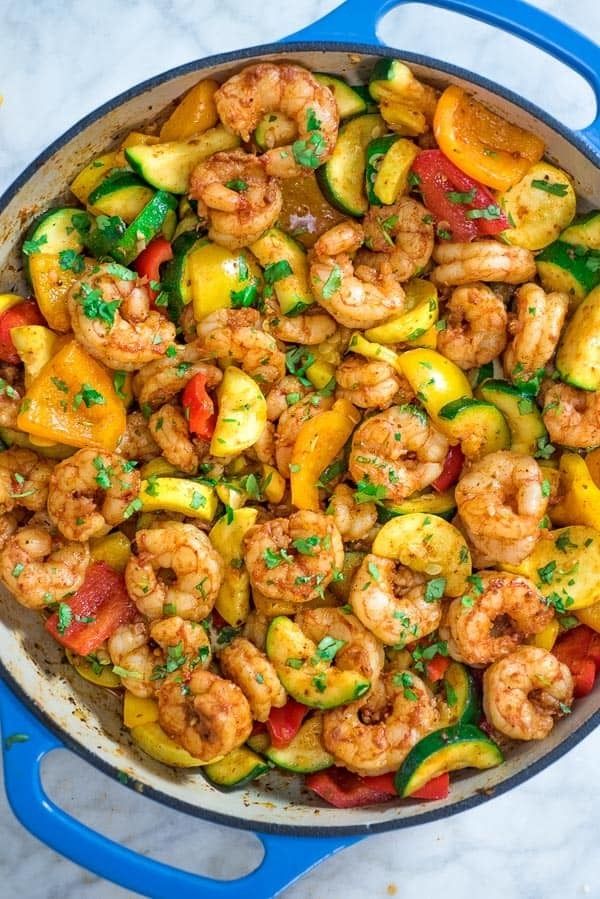 Fill with water to just below the steamer basket. Bring water to a boil.
Fill with water to just below the steamer basket. Bring water to a boil.Add shrimp to the pot and cover with a lid. Reduce heat to low and steam for 4-5 minutes, until they curl and turn pink. Turn once halfway through to ensure even cooking.
Sauteed
Heat a large pan over medium high heat and add oil or butter. Swirl the pan around to coat the surface.
Once it begins to shimmer add the shrimp. Flip when they turn pinkish on the bottom and curl, about 2-3 minutes. Finish cooking until pink, opque, and curled into a loose “C” shape, about 1-2 minutes. Immediately transfer to a plate to prevent overcooking.
Broiled
Turn the broiler on. Line a baking sheet with parchment paper or a baking mat and place shrimp on top in single layer, making sure there's space in between so they don't touch.
Place on the top oven rack and broil for 2-3 minutes.
- Once cooked, be sure to finely mince.

- Will keep in the refrigerator for 3-4 days.
Calories: 106kcal | Protein: 15g | Fat: 5g | Sodium: 90mg
Course Main entree
Cuisine American
Tried this Recipe? Tag me Today!Tag me @KidFriendly.Meals today!
How to Serve Shrimp to Your Baby!
June 1, 2022
On Facebook, Angela Portier shared a picture of her adorable son Henry Luke enjoying some delicious wild-caught American shrimp! Thanks, Angela! The wildest part about it: Henry Luke is only 9 months old!
Of course, at Wild American Shrimp we believe in starting as early as possible when it comes to eating wild-caught shrimp, but you may be asking yourself: can a baby even eat shrimp?
We’re glad you asked!
According to Verywell Family, the American Academy of Pediatrics used to recommend that parents wait until their children were older before they started giving them fish or shellfish of any kind. However, they have recently shifted away from this stance, saying, “Within a few months of starting solid foods, your baby’s daily diet should include a variety of foods each day that may include…fish.” Despite this, they do personally recommend that,
However, they have recently shifted away from this stance, saying, “Within a few months of starting solid foods, your baby’s daily diet should include a variety of foods each day that may include…fish.” Despite this, they do personally recommend that,
“When introducing fish [or shrimp], make sure that it’s fully cooked. Mince it very finely and blend it in finely with vegetables that have already been introduced without problems. Always check fish and shellfish for bones and bits of shell.”
All of this is, of course, to reduce any risk of choking. Other than that, your baby should be fine eating seafood. In fact, one study from the Archives of Disease in Childhood found that babies that start eating fish and shellfish before they are 9 months old have a lower risk of getting eczema, and in other cultures around the world, fish is more of a centerpiece in babies’ diets than meats more common in ours, such as chicken, pork, and beef. For shellfish to feed your baby that are not high in mercury levels, the Food & Drug Administration recommends shrimp, and we of course recommend wild-caught American shrimp for the best taste, high nutritional value, and no harmful chemicals or antibiotics.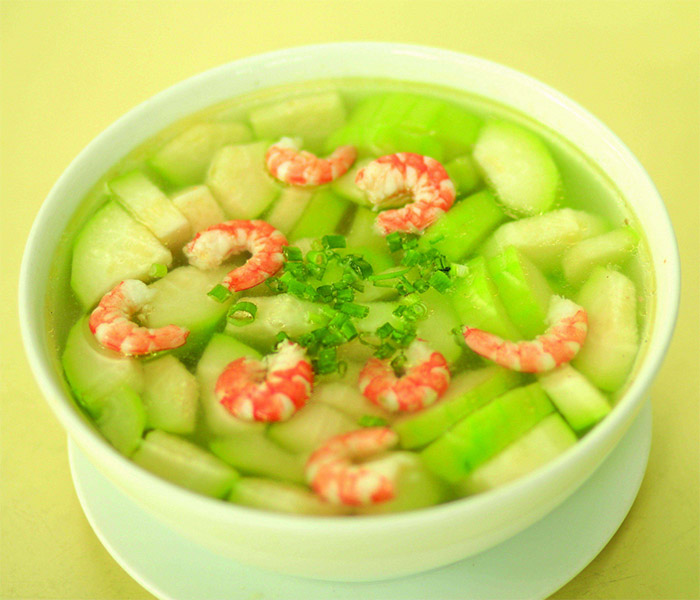
BabyCenter says that you can feed your children shellfish as early as 4 to 6 months old. However, all health resources, such as the American Academy of Pediatrics (AAP), say to be absolutely certain that your baby does not have any kind of food allergy or chronic eczema, as shrimp could potentially trigger an allergic reaction.
If your baby is in the clear for allergies, then we say feel free – and even encourage you – to make wild-caught American shrimp a staple of your baby’s diet as soon as possible! Try serving it in a light gumbo, mix it in with mashed avocado, or serve it with rice! While our Recipes page is typically more designed for traditional meals, feel free to tweak our recipes in ways that would suit your baby’s tastes! And of course, we always recommend you use Wild American Shrimp, easily located in your nearby markets and grocery stores or available to order online, just look for the words, “wild-caught American shrimp” on the packaging.
* Disclaimer: Always be sure to discuss with your pediatrician before introducing new foods to your infant.
November 3, 2022, BILOXI, Mississippi – Wild American Shrimp®, the American Shrimp Processors Association (ASPA)’s marketing program for wild-caught Gulf and South Atlantic Shrimp, has announced...
Read More November 2022
Dominick’s Seafood, founded in 1992 by Dominick Ficarino, is just the latest venture in four generations of shrimp and seafood processing in the Ficarino family....
Read More October 2022
From the United States’ highest mountains to the beaches on all of our coasts, buying local means buying American. The COVID-19 pandemic left Americans wondering...
Read More October 2022
from what age, is it possible at 2 years old, 1 year old?
Child's birthday » Baby food » At what age can a child be given shrimp
06/30/2016
Contents
The benefits of shrimp are not only in their rich composition of vitamins and minerals. They are easily digestible. Nutritionists advise replacing meat and fish in the diet of adults with this gourmet dish. According to the content of fatty acids, vitamin composition and the amount of other trace elements, shrimp can be compared with pomegranate. In France and Italy, seafood is called nothing more than fruits of the sea.
They are easily digestible. Nutritionists advise replacing meat and fish in the diet of adults with this gourmet dish. According to the content of fatty acids, vitamin composition and the amount of other trace elements, shrimp can be compared with pomegranate. In France and Italy, seafood is called nothing more than fruits of the sea.
There is no doubt about the quality of sea gifts in these countries, but those that come to Russian shelves often grew not in the sea, but in an incomprehensible muddy reservoir on a Chinese or Vietnamese farm. Their diet was clearly different from what they would have eaten in their natural habitat.
Shrimp nutritional valueGrowth hormone and antibiotics are commonly used in seafood farms. All this is accumulated, and then, together with the delicacy product, it enters the consumer's table. This is not only not useful, but can become a direct threat to life.
Shrimps are essential for a growing organism - they have a high protein content.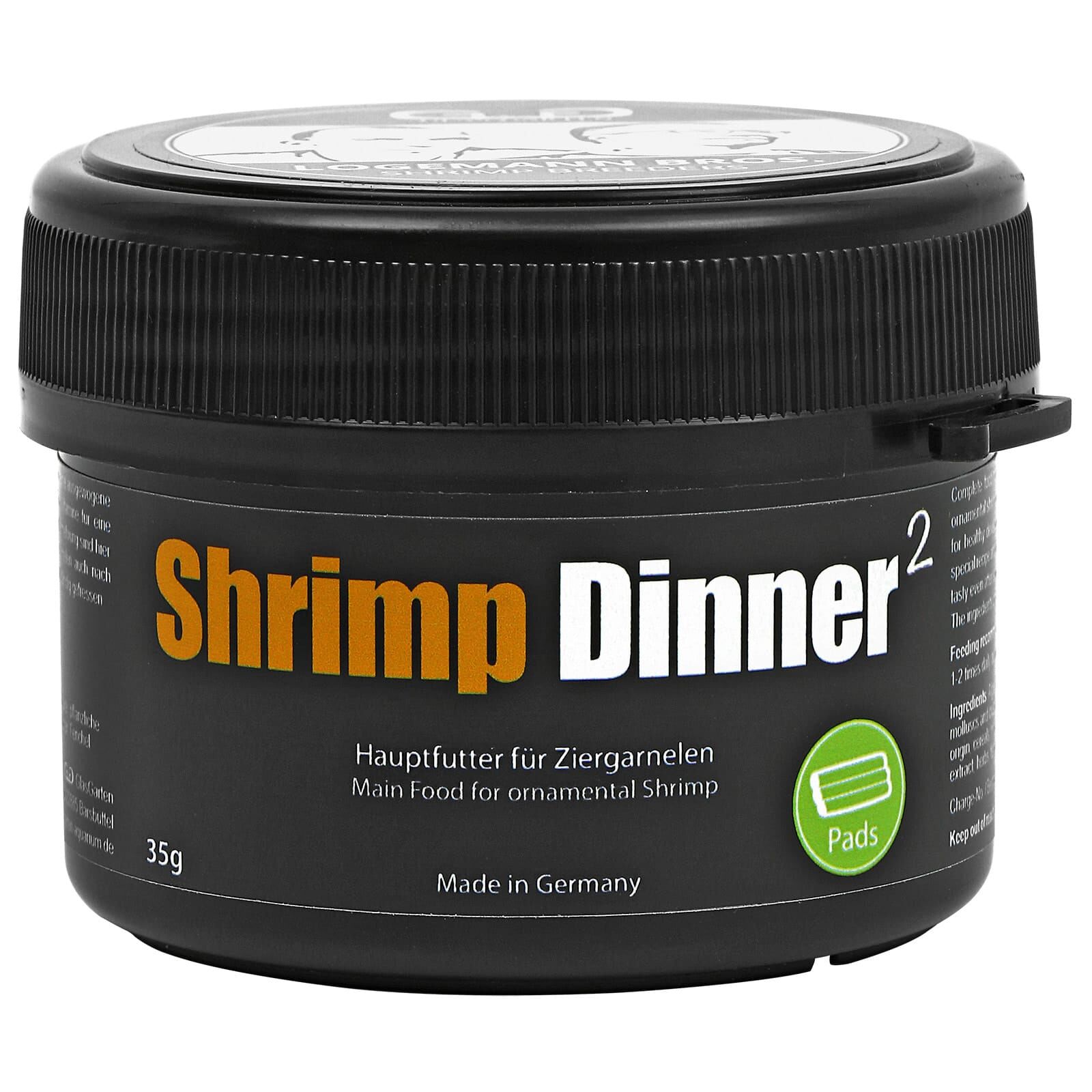 There is no definite recommendation, as well as a strict ban on the age at which this product can be introduced into the diet. Each pediatrician gives his advice on the introduction of a product in the diet of children.
There is no definite recommendation, as well as a strict ban on the age at which this product can be introduced into the diet. Each pediatrician gives his advice on the introduction of a product in the diet of children.
Babies under one year old are not advised by any doctor to introduce seafood, except for certain types of fish. But they are also administered in small doses. All seafood is at high risk. Allergy to seafood leads to more complex diseases.
Why shrimp should not be eaten at an early age
Places of localization of allergies in children to seafood Allergic reactions to the smell of seafood from an early age is a prerequisite for the fact that allergies will manifest themselves to other products, the smell of household chemicals, dust, and so on. In order not to provoke the development of various types of intolerance to foods and smells in children, it is better to refrain from introducing this exotic product into the diet for as long as possible.
If farm-grown crustaceans are fed to children instead of a seafood product, this can lead to a severe allergic reaction, poisoning. It is possible that an early acquaintance with an exotic product can be fatal. All the necessary trace elements for children will be provided by ordinary fruits and meat. There is no need to stuff a child with exotic things that not every adult will like.
Many parents believe that dietary restrictions apply only up to one and a half years. This is not so, on the shelves of stores there are always products marked for the nutrition of children under 3 years old. Among them, there are no fish and other seafood, which are a serious test for an unformed digestive system. The introduction of such products should take place not by grams, but by crumbs.
You can give the baby to try a small shrimp, but for the next 3 days he should not try any new food, so that when an allergy manifests, he will know exactly what provoked it.

From 1 to 3 years of age, fish with a low content of unsaturated fatty acids can be given. Shrimp are not included in this category. They are closer in content "Omega-3" and "Omega-6" to salmon breeds and caviar. Acids contribute to the regulation of cholesterol in the body. A balanced baby food is unlikely to cause a high content of it in the baby's blood.
Barriers to introducing shrimp into baby food
Too much salt in a baby's diet can cause swelling- High salt and spice content. This amount of salt in the product leads to the retention of water in the body, which causes swelling. Spices under the age of 5 are also not recommended.
- No specific recipe recommendation for this dish. All are united in only one thing, that for 1 kg of the main product, you need to pour 2 tablespoons of salt during cooking and add aromatic spices - it is completely unacceptable for children.

According to recipes, salt and spices help fight off the sea smell. Is it marine?
Who needs seafood
Shrimp can be included in the menu for children after the age ofShrimp help treat anemia, accelerate the growth of the body, saturate it with all the microelements necessary for full development. In the absence of an allergy to seafood, a pediatrician, among the necessary, may advise introducing them into the diet of a child who is weakened due to a lack of protein in the diet. But not for a child under one year old. In this case, an urgent need can be given this delicacy from about 1.5 years old, provided:
- That the amount of salt and spices during cooking will be negligible.
- Cook until cooked for this product will be selected among all cooking methods.
- And the supplier guarantees that this is a sea delicacy, and not grown in an artificial reservoir.
Permissible portion for children
Calorie content of seafood During the day, a child under 5 years old can be given no more than 50 g - this is the maximum allowable value, 30 grams is enough. Such an amount of an exotic product will completely replace 100 gr. meat or fish. It is not recommended to give it more than once a week. At the age of 5 years, you can give from 80 to 100 gr. shrimp. The frequency of consumption is also limited to 1 replacement of meat or fish per week with a traditional side dish.
Such an amount of an exotic product will completely replace 100 gr. meat or fish. It is not recommended to give it more than once a week. At the age of 5 years, you can give from 80 to 100 gr. shrimp. The frequency of consumption is also limited to 1 replacement of meat or fish per week with a traditional side dish.
With normal development and sufficient protein in the normal diet, no supplement such as shrimp is required. You can give shrimp as something outlandish, as a festive dish, observing dosage restrictions. By reducing the amount of spices during cooking, there is a risk that the specific smell of the product will become an insurmountable obstacle, the child will refuse to eat it.
You can beat off the smell of the sea with lemon juice or sour cream sauce. Lemon juice, even in small quantities, is unacceptable for cooking for children under one year old. Sour cream sauce can and should be given.
Vitamins for children are best obtained from fruits that are traditional for the region where they live.

Video: How to choose the right shrimp
Didn't find your organization?
Add now!
2016-06-30
Previous Cashew in the diet of young children
Next Pollock for children - recipes
Also read
Benefits of chamomile tea for children
Contents1 What is it?2 Useful properties3 Instructions for use3.1 How to brew correctly?4 Age restrictions and ...
When to give a child shrimp and mussels
Should seafood be included in children's diet? What can be given and what can not? Let's discuss with a specialist.
Doctor's consultation
You can get the consultation of the necessary specialist online in the Doctis 9 application0003
Laboratory
You can undergo a comprehensive examination of all major body systems
- Health benefits of seafood for children
- What kind of shrimp can children?
- Can children eat oysters and mussels
- The safest seafood
- How seafood allergy manifests
There is no consensus among parents on this matter. Some believe that marine reptiles are shrimp, octopuses, crabs, mussels and other seafood - can be exclusively in the adult diet. And for the children these excesses are useless - let them eat chicken and meat instead. Others are sure that seafood much healthier than chicken and meat, so they should be on the children's menu. Who is right?
Some believe that marine reptiles are shrimp, octopuses, crabs, mussels and other seafood - can be exclusively in the adult diet. And for the children these excesses are useless - let them eat chicken and meat instead. Others are sure that seafood much healthier than chicken and meat, so they should be on the children's menu. Who is right?
Seafood source of iodine in baby food
What are the benefits of seafood for children? Because they have a lot of iodine?
Seafood does contain iodine. And in large quantities. For example, in shrimp it is 100 times more than in meat! In addition, they are high in protein and low in fat, which makes this product indispensable for dietary nutrition. Other marine life is also useful. Say, mussels have a lot of vitamin E, valuable omega-3 and omega-6 fatty acids. In crab meat and squid - protein, vitamins PP, B6, B5, B1, B2, B12. In addition, seafood contains essential amino acids and trace elements.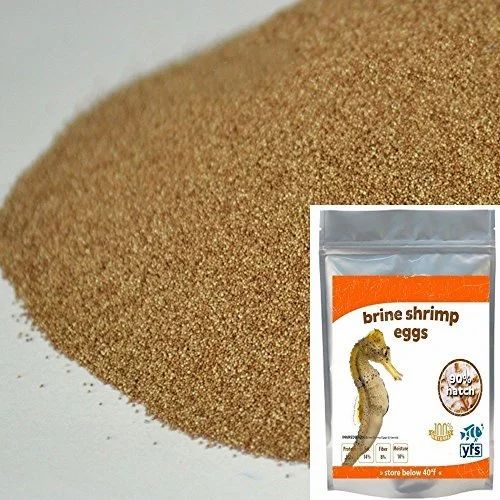 - phosphorus, sodium, potassium, magnesium, zinc.
- phosphorus, sodium, potassium, magnesium, zinc.
Seafood may be included in the diet of children. But - with reservations. Firstly, most marine life, like sponges, accumulate in their bodies everything that is dissolved in water. And harmful substances as well. Their safety directly depends on their habitat. Secondly, the child may be allergic to seafood. This, unfortunately, happens often.
My child loves shrimp. Especially the royal ones. But recently I found out that big shrimp are the worst. This is true?
Such shrimp often "sail" to our stores from Vietnam, India and China, where they are grown on special farms. Some manufacturers use dyes, growth promoters and antibiotics. There is little useful in such shrimp, and there are more than enough harmful things. Therefore, it is better for children to buy ordinary northern shrimp. They are smaller, but more useful. Yes, and their meat is juicier.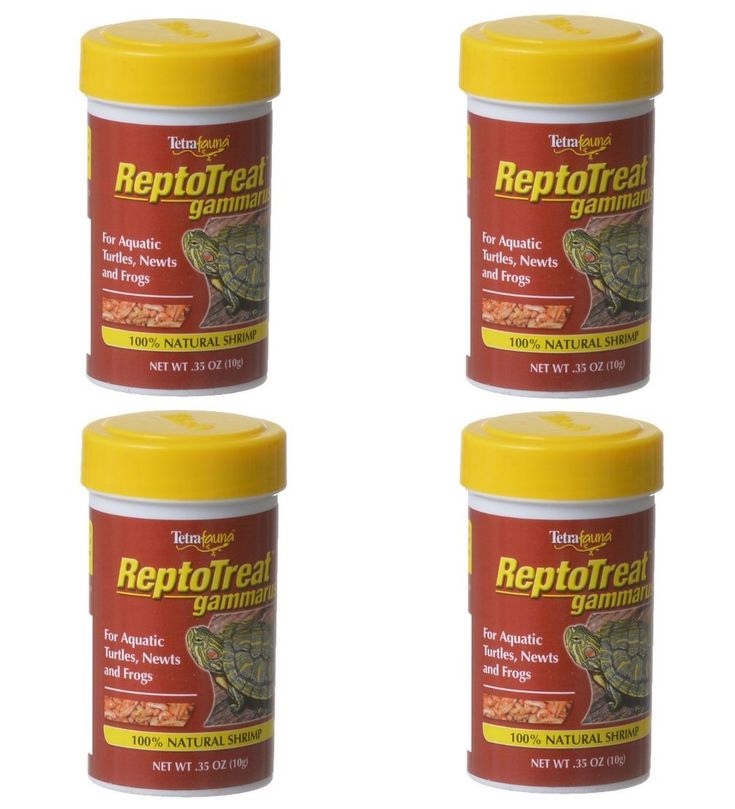
Manufacturers advise paying attention to the appearance of shrimp when buying. Coloring should be even, tail - pressed to the abdomen. There are spots on the shell, but is there a lot of snow in the package? Such seafood Most likely it has been defrosted several times. It is better not to eat them.
Can children be given oysters and mussels?
Oysters are usually eaten raw, but children can be given cooked seafood. Concerning mussels, then for babies it is heavy food. It is better to offer them to older children. Before cooking shellfish, smell them. After all, we are not a Mediterranean country - sea reptiles come to us they travel for a long time, and during transportation storage conditions may be violated, which leads to reproduction pathogenic flora. As a result - to food poisoning. Therefore, if you feel an unpleasant smell, even weak, discard. The meat of the mollusk should be elastic and light. Dark and flabby - evidence of the age of the product.
Dark and flabby - evidence of the age of the product.
Allergy to seafood in children
Which marine life is the safest in terms of allergies? From what age can they introduce into the children's diet?
As for security, it's all very individual. Often allergic to shrimp caviar, crab meat. Whether or not an allergy to seafood will occur is difficult to predict.
It is necessary to introduce seafood into the children's diet with extreme caution and only in if the parents are not allergic to fish and seafood. Otherwise high the likelihood that the heir will also be hypersensitive to these products.
Seafood is not recommended for children under 2 years of age. Later - you can, but a little bit. Start with a small piece. Did everything go well? Next time increase the serving to 5-10 g. With good tolerance, you can give up to 50 g of seafood. But - no more than 2 times a week. No matter how useful marine life is, it is still exotic food for a child.


